
Guests
- Paul McGeoughchief correspondent, Sydney Morning Herald. He is the author of Kill Khalid: The Failed Mossad Assassination of Khalid Mishal and the Rise of Hamas.
- Kate Geraghtyphotographer with the Sydney Morning Herald.
After the Israeli military raided the Gaza aid flotilla and killed nine of the activists on board, they detained almost everyone else — 700 activists and journalists — hauled them to the Israeli port of Ashdod, and kept them largely out of communication with family, press and lawyers for days. The Israeli government confiscated every recording and communication device it could find — devices containing almost all the recorded evidence of the raid. The Israelis selected, edited and released footage they wanted the world to see. We speak to two veteran reporters who were covering the Gaza Freedom Flotilla for Australia’s Sydney Morning Herald. [includes rush transcript]
Transcript
AMY GOODMAN: Who frames the narrative? After the Israeli military raided the Gaza aid flotilla and killed nine of the activists onboard, they detained almost everyone else — 700 activists and journalists — hauled them to the Israeli port of Ashdod, and kept them largely out of communication with family, press and lawyers for days. The Israeli government confiscated every recording and communication device it could find, devices containing almost all the recorded evidence of the raid. The Israelis selected, edited, released footage they wanted the world to see.
Well, we’re joined now by two veteran journalists who were covering the Gaza Freedom Flotilla for Australia’s Sydney Morning Herald. We’re joined by chief correspondent Paul McGeough and the photographer Kate Geraghty. They both join us via Democracy Now! video stream from Istanbul, where they were deported to.
Paul, let’s start with you. Which boat were you on? Tell us what happened early Monday morning.
PAUL McGEOUGH: We were on the Challenger 1. It was a twenty-five-meter ocean cruiser. There were seventeen people onboard, two professional journalists there in a capacity to observe what was happening — myself and Kate — a crew of two, and the rest were activists who were a part of the flotilla crowd, the hundreds who were onboard all of the ships.
Before midnight, there was an exchange with the Israeli navy, a very terse, very specific warning. You could tell that a script, a pre-prepared script, was being read, ordering all the boats. Captain by captain received this message to change course, to alter course away from Gaza. Having said that, we were a good sixty or seventy miles from Gaza in international waters. The captains were warned that lethal force would be used if they persisted. The radio communications then shut down.
And shortly after 4:00 a.m., we saw the Zodiacs moving in. Before that, we could see, at some distance, Israeli warships, just pinpoints of light, but then we became aware of the [inaudible] was moving around each of the boats. At one stage we had five of them trailing us. As the moon came up, you could see them more clearly. And later in the morning, as the sun came up, they were very easy to see.
Shortly after 4:00, about 4:10, 4:15, they attempted to board the Mavi Marmara, but were repelled, effectively, by the passengers. They were throwing things, rubbish, down on them. There were throwing bits and pieces of the boat. There was a lot of yelling and screaming. We were about fifty meters off — sorry, 150 meters off to the port side of the ship when the Israelis started lobbing sound grenades, tear-gas canisters onto the rear deck of the boat, where there was a big crowd. You could see them in their lifejackets. You could see the flashes of the incendiary devices. You could hear the noise of them exploding, and a panicked, angry reaction to that.
AMY GOODMAN: And on your boat, describe when the commandos came up on your boat and what happened then. We only have a few minutes, and I also want to bring Kate into this.
PAUL McGEOUGH: Alright, well, we — the skipper of the boat that we were on decided that he’d make a break for it, so he went to full speed, which was about eighteen knots. We had four or five Zodiacs on our tail. They finally managed to come alongside, because the skipper decided he had been on a boat that had been rammed in the past, and he didn’t want to be rammed again. They came over [inaudible] a flash of light, and Kate took a jolt as she was tasered and thrown across the deck. We barely had time to recover ourselves before men were piling in camouflage, in masked faces, piling over the side of the flybridge where we were.
They lunged for the cameras. They lunged for the satellite telephone, which was in my hand. I was talking to the Sydney Morning Herald in Australia, filing a report. They spoke with Australian accents, which was quite remarkable. And —-
AMY GOODMAN: Wait a second.
PAUL McGEOUGH: —- when we claimed to be professional journalists, I said, ”Sydney Morning Herald,” without missing a beat, one of them turned and said, “We know you’re with the Herald.” Not “we know the Herald,” “we know you’re with it.” And another one used the classic Australian vernacular of “no worries.”
But everyone got pushed down onto the lower decks. One of the women who was on the upper deck at that stage had a gun pointed — a pistol pointed right at her head, unless she got off a manhatch that she was sitting on. The activists onboard engaged in passive resistance, nonviolent techniques of making it as difficult as possible for the soldiers to round up everyone on the boat. Two of the women ended up being dragged to the forward deck with bags over their heads.
AMY GOODMAN: Kate, you were tasered by the Israeli commandos?
KATE GERAGHTY: Yes. I was photographing, standing right next to Paul. And I was looking over the side of the boat, as the commando came —- an Israeli commando came up towards us. So I was photographing and basically got hit on the arm just above my elbow, which knocked me about a meter, about a meter and a half. And then, I was immediately sick. And then the commando came toward me and -—
AMY GOODMAN: Sick, you mean — you mean you were throwing up?
KATE GERAGHTY: Yeah, yeah, yeah. And then a commando wrestled my camera off me. And they had guns, so, you know, we just said basically, as Paul mentioned, that we’re Australian journalists, we’re with the Sydney Morning Herald. And that didn’t make any difference.
AMY GOODMAN: Kate, you and Paul have covered many war zones around the world. You’re experienced journalists. How did this compare?
KATE GERAGHTY: Well, this, for me, personally, it was — you had nowhere to go. I mean, you couldn’t run anywhere. You couldn’t hide. We were doing our job. And it wasn’t respected. So, yeah, I did not appreciate it.
AMY GOODMAN: Paul, we only have a minute, but talking about framing the story, you were detained, like the others, for more than three days. They confiscated all of your equipment? What did you have? How were you able to get word out? Or weren’t you able to?
PAUL McGEOUGH: Well, before they came on the ship, we were able to do our jobs as our contracts require of us. We were filing regular reports. We had satellites. We had handheld sat phones. We had computers that linked into those satellite phones. We had Kate’s very expensive cameras. Anywhere between $60,000 and $80,000 worth of equipment was confiscated from us, and we have not seen it. We were not given receipts for it.
But the thing that — talking to people who were on all of the boats, while we were in detention, the systematic attempt and very deliberate first priority for the Israeli soldiers as they came on the ships was to shut down the story, to confiscate all cameras, to shut down satellites, to smash the CCTV cameras that were on the Mavi Marmara, to make sure that nothing was going out. They were hellbent on controlling the story. If you go back to the Dubai disaster, where the story played so badly for the Israelis in January with the murder of the Hamas operative, they are so concerned and so aware of the importance of controlling the narrative at any volatile point in the crisis that their first priority was, as I said, to shut down any other story.
AMY GOODMAN: I want to thank you both very much for being with us, Paul McGeough and Kate Geraghty. They’re speaking to us from Istanbul, where they were deported to. And I want to say, you can go to our website at democracynow.org to see Kate’s pictures, the ones she secreted away that weren’t confiscated, among the hundreds, by the Israeli military.

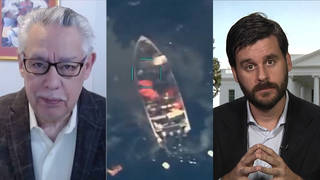
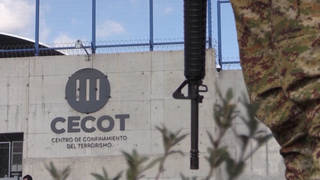
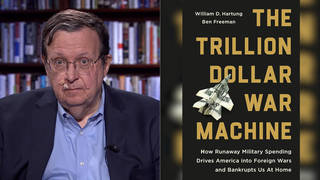
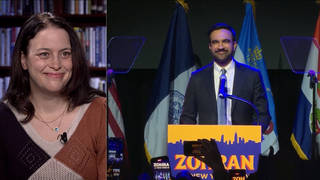





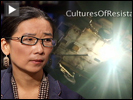
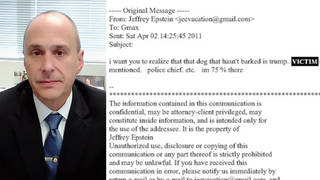
Media Options